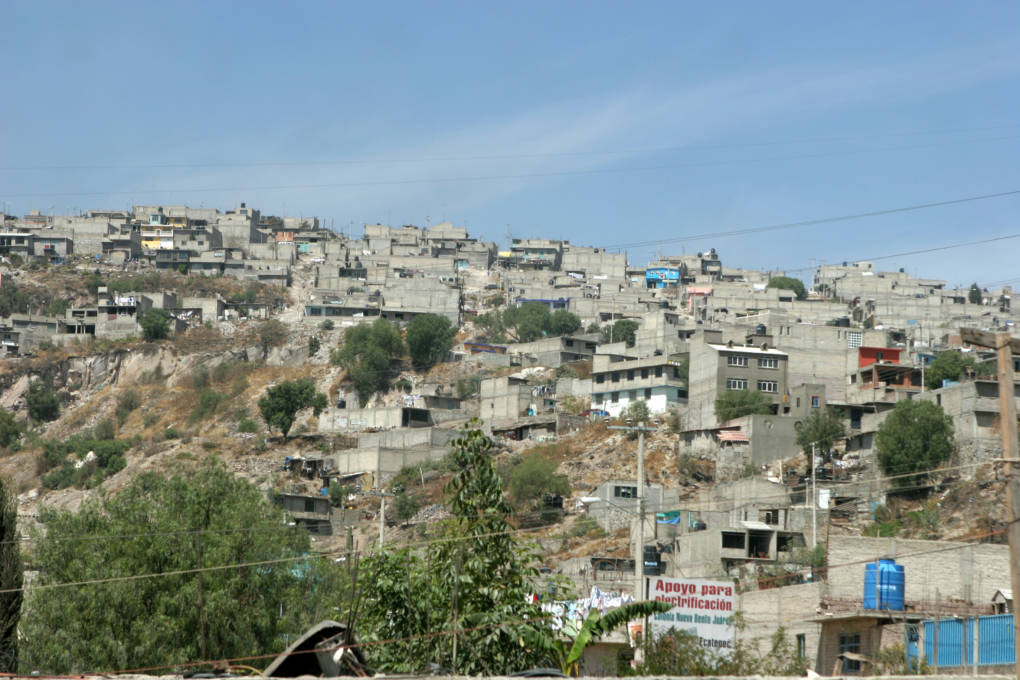Compared to most of the world, California would appear to have a head start in planning for a changing climate.
Cities across the world are not doing enough to protect citizens from the likely impacts. That’s the finding of a new analysis from the National Center for Atmospheric Research (NCAR) in Boulder, CO. The report says cities are unprepared for rising seas, intensified heat waves, while failing to curb their own greenhouse gas emissions.
The failure to act doesn’t bode well for the billions of people who live in cities around the world, according to NCAR Scientist Patricia Romero Lankao, who came to her findings through an in-depth analysis of urban policies.
More than half the world’s population lives in cities. That proportion continues to grow, especially in small-to-medium sized urban areas, where infrastructure is often limited, according to the study. In developing countries this often means substandard housing, and neighborhoods springing up in vulnerable areas such as flood plains or hillsides. Climate change could exacerbate already difficult conditions in these urban areas by bringing more extreme weather events, such as floods, heat waves, and droughts, to places ill-equipped to deal with them.
The study cites three main reasons for cities’ failure to prepare:
- Fast-growing cities are overwhelmed with other needs,
- Civic leaders are often under pressure to downplay the need for health and safety standards in order to foster economic growth, and
- Climate projections are rarely detailed enough to predict impacts on individual cities.
Cities also are not doing all they could to reduce their own emissions. The NCAR study finds that, rather than imposing construction standards that could save energy or guiding policy to reduce automobile use, many local governments are taking a “hands-off” approach.
“Cities can have an enormous influence on emissions by focusing on mass transit systems and energy-efficient structures, but local leaders face pressures to build more roads and relax regulations that could reduce energy use,” said Romero Lankao in a written release.
Here in California, Senate Bill 375 takes aim at exactly that problem. By requiring regional and local authorities to work together to find ways to reduce driving (as measured through vehicle miles traveled), the law is designed to help California reach its greenhouse gas emissions reductions goals. Different regions across the state have different reductions targets for per-capita emissions from passenger vehicles, but most fall in the range of a 7% reduction by 2020, and 13% by 2035.
“California is getting there,” said Michael Schmitz, the California Director for ICLEI-Local Governments for Sustainability, a membership association of more than 1,000 local governments worldwide (600 in the US) that aims to “advance climate protection and sustainable development.”
He said that while cities like Vancouver, British Columbia, and others in Japan and Australia are ahead of California in terms of acting decisively to mitigate emissions and to adapt to climate change, cities in California are leading the way in the United States. That’s largely due to action at the state level, said Schmitz who credits the state’s AB 32 and SB 375 laws with creating a framework for local governments, regional authorities, and the state to work together on climate change issues.
“We see in California cities that the biggest adaptation issues are sea level rise, constraints on water supply, and public health concerns from increased heat days,” said Schmitz.
He cited San Mateo County, Chula Vista, Greater San Diego, and the Bay Area as among California’s leaders because all have begun “vulnerability assessments,” to gauge how climate change could affect local infrastructure, public health and safety. Another example, is the city of Ventura, which has already begun to act, he said, by relocating oceanfront bike paths and parking lots in anticipation of sea level rise.
“Cities have the most direct control over land-use decisions and public health infrastructure, and they can have the biggest impact on behavior changes,” said Schmitz. “They have the ability and the burden to be able to address and adapt to climate change.”
Learn more about projected climate change impacts in California from this 2009 report from the United States Global Change Research Program.

